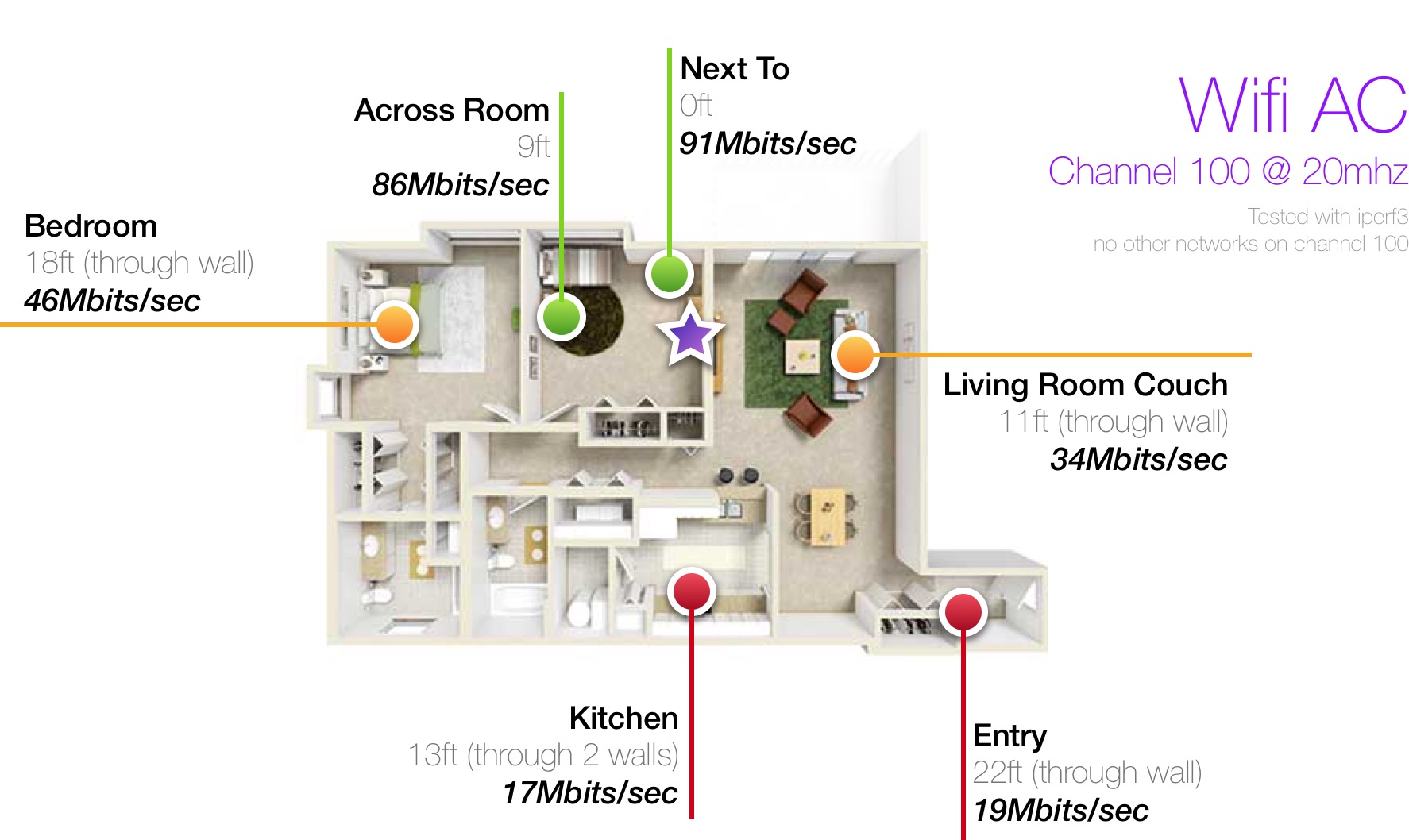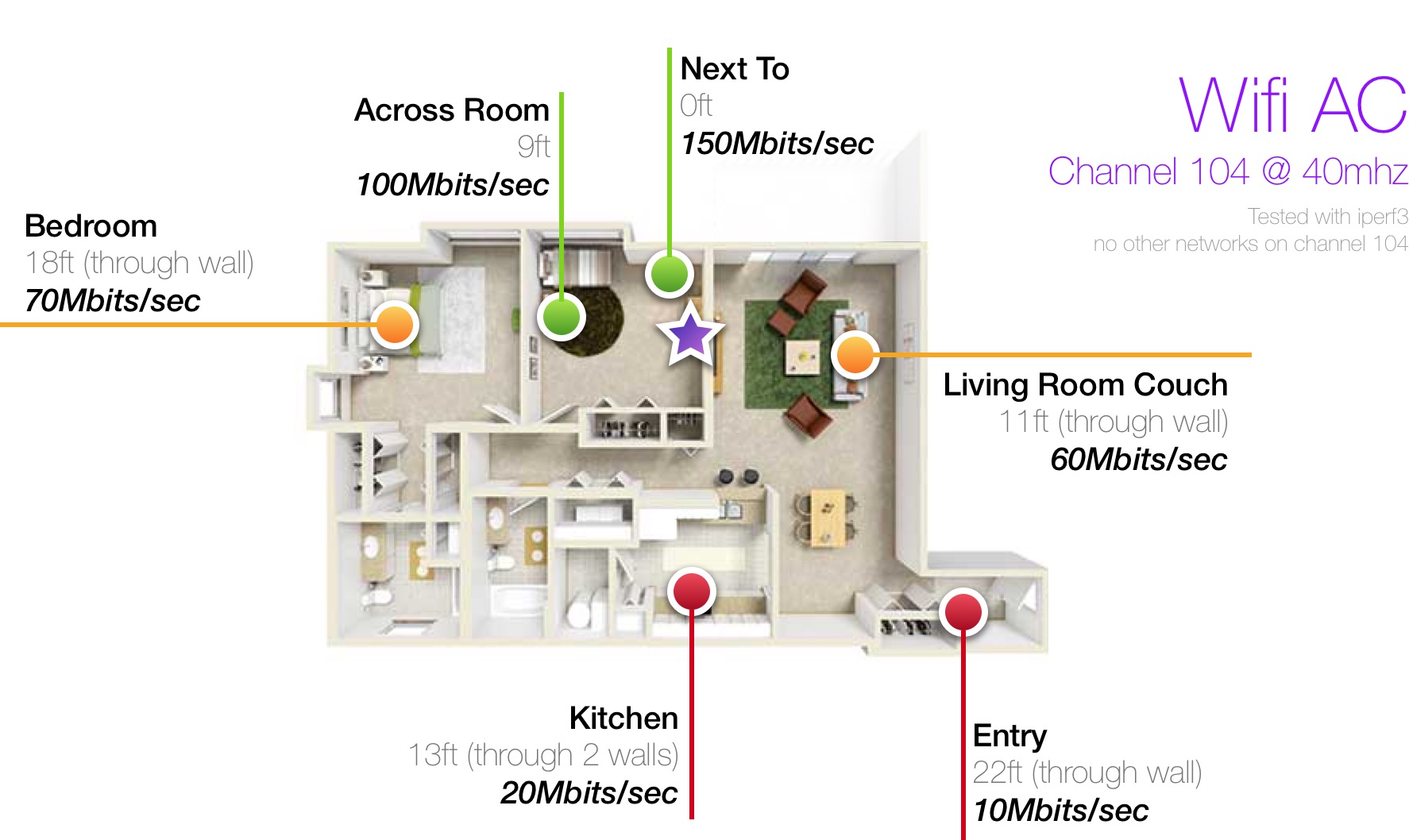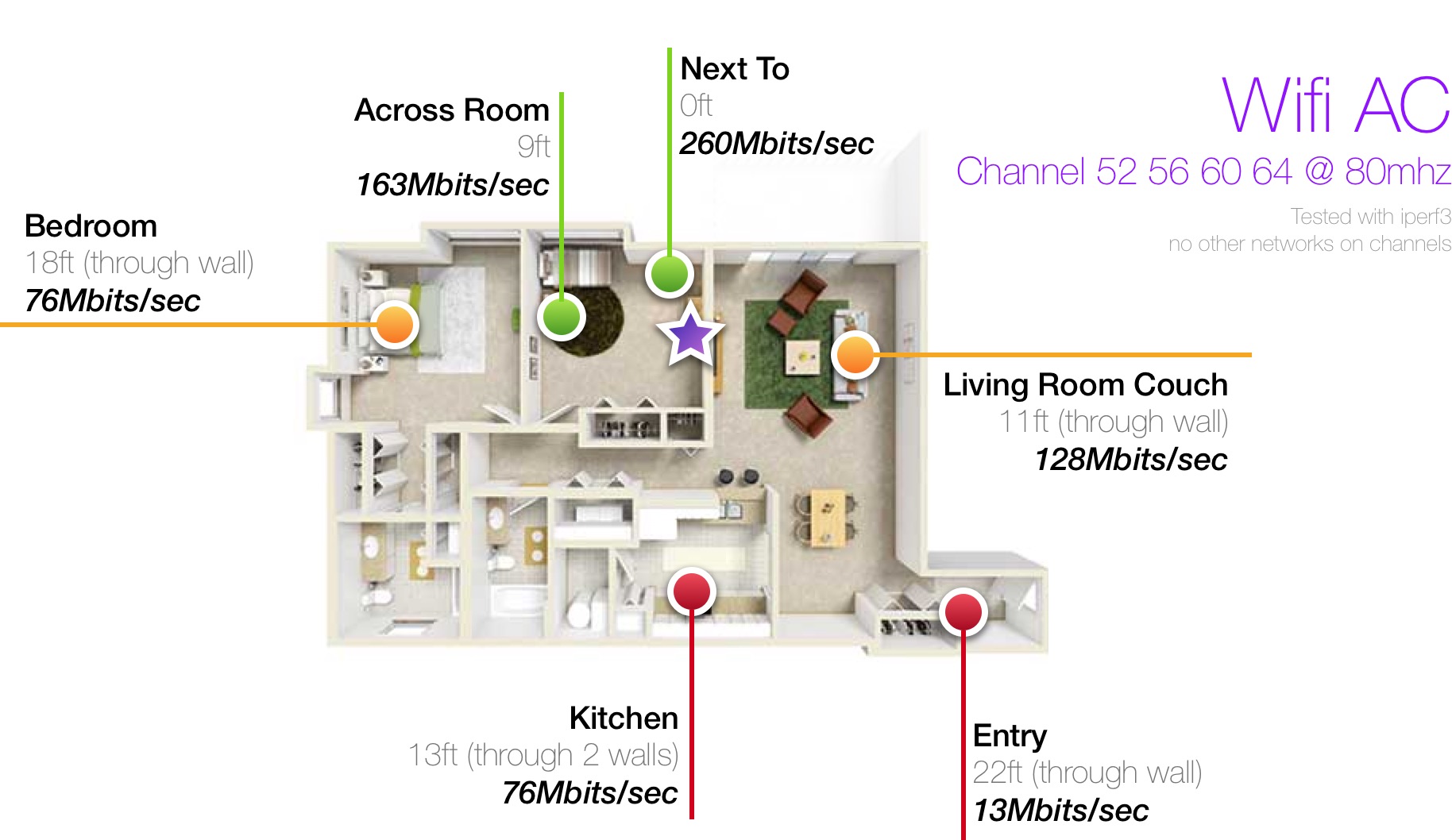WIFI Signal Degrades More Than You Think
Your high speed wireless network isn't running as fast as you think it is.
I recently went down the path of switching as many of my computers to gigabit ethernet and I wanted to test to make sure my cables were actually able to do 1000Mbit/sec. Unfortunately the normal route to do that is to buy a cable certifier unit that runs over $1000. But then I found iperf3, a linux/mac/win command line tool that can max out the network IO and tell you what it got.
That is when I realized it could give me actual wireless network speed instead of just transmitter rate. Now there are lots of potential bottlenecks with this setup — motherboard IO, NIC IO, my current radio airspace around my apartment, my router, etc. But it is interesting to see how a “realistic” apartment environment behaves with wireless signals.
Some notes of my setup:
- The iperf3 server is running on an iMac that can local loopback 45000Mbit/sec (45Gbit/sec)
- The iperf3 client is running on an Asus laptop that can local loopback 4300Mbit/sec (4Gbit/sec)
- Over wired ethernet my router was able to switch 1000Mbit/sec between the laptop and desktop
- My router is nothing impressive, it’s a D-Link DIR-860L running DD-WRT v24-sp2
You should not treat my results as a benchmark of all wireless setups but its interesting to see how it compares 2.4ghz wifi to 5ghz wifi at various channel widths.
2.4ghz Wifi N
- advertised speeds are pretty unrealistic, according to my laptop and the router it is 144Mbps

5ghz Wifi AC
- advertised speeds are pretty unrealistic
- increasing channel width only helps nearby speed, far away spots will stay slow
- going through 1 wall roughly cuts the speed in half



Want to run your own test?
You will need two computers – one to act as the server and one to act as the client.
https://iperf.fr/iperf-download.php (place the file into your path so you can call it by just iperf3 – on windows put it in C:\Windows and for linux put it in \usr\bin\ folder)
Server:
iperf3 -sClient:
iperf3 -c 192.168.0.x